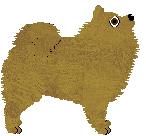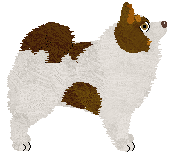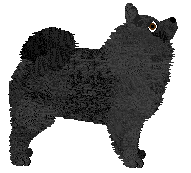The german spitz, like other spitzes, is a very old type of dog. Despite this, they were rarely mentioned in literature before the 1700s. French de Buffon (1707-88) and Carl von Linneaus (1707-78) were both among the first, and spoke of the small, usually white, spitz from Pomerania. Spitzes of all sizes were common in Germany and during the 1800s many were exported around the world, in particular to Britain, were the modern Pomeranian was formed.
The spitzes were classified after size during the 1800s, but it wasn't until the 1900s that the varities were finally decided upon. The dogs were originally kept as watchdogs, and many are still very "talk-active"!
All german spitzes share standard except for size, and in the case of the grosspitz, colour. The back should be as short as possible, together with the highly set set - which covers part of the back - giving a rounded outline. The frontlegs should be straight and the paws as small as possible. The head should be wedge-shaped with a rather short muzzle (in particular in the smaller sizes). The ears are small and set high on the head.













 with
with 

 in the traditional pattern.
in the traditional pattern. may be masked (standard mask). Mask matches main body - Cream/Red dogz may be masked with
may be masked (standard mask). Mask matches main body - Cream/Red dogz may be masked with 

 .
. except in livers of all kinds which have
except in livers of all kinds which have 

 except in livers of all kinds which have
except in livers of all kinds which have 


